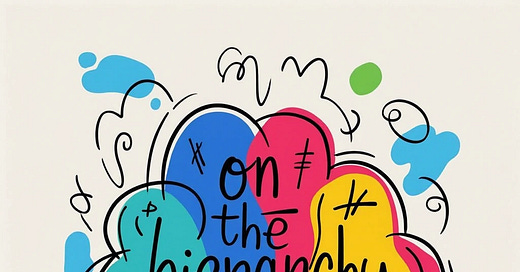The Street Doesn’t Remember You
Sydney, cycling and the civic body we’re trying to rebuild
In some cities, the street notices you.
A child steps off the curb and traffic slows. A vendor unpacks her crates of guavas without fear of a fine. On Sunday mornings, the roads go quiet, not from absence, but from presence. You hear music. Wheels. Conversations unspooling mid-stride.
It’s subtle. You might miss it. But if you live there long enough, it registers in the body: the street was built to hold you. You are not a disruption. You are part of the system.
Sydney is not one of those cities.
I’ve spent the past few months trying to remember what it means to ride here. Not just to move through space, but to belong to it. To feel, in the legs and lungs and spine, that your presence makes sense. That your rhythm is welcome. That the road might soften if you fall. But riding in Sydney offers no such contract. The cars skim too close. The paint peels from forgotten bike lanes. Every intersection carries the residue of neglect. You learn to scan ahead constantly, to anticipate door swings and sudden brakes. You shoulder the city’s indifference and keep pedalling anyway.
When I lived in Mexico City, I rode every Sunday down Reforma. The entire avenue, eight lanes wide, closed to cars. Families emerged. Teenagers on rental bikes. Toddlers in handlebar seats. Friends on rollerblades, dogs in baskets, music thumping from speakers strapped to backs. At each corner, volunteers in hi-vis waved us through like we were something worth protecting.
It wasn’t perfect. The air was thick. The politics, layered. But it worked, not because the infrastructure was exceptional, but because the culture made room for joy. And because it happened every week. Not as spectacle, but as rhythm. As something ordinary and repeatable.
Sydney moves differently. Here, every gesture toward shared movement feels precarious. Pop-up bike lanes are installed, then removed. Pedestrianised zones are debated, postponed, erased. Micromobility schemes appear and vanish. The city cannot decide if it trusts itself.
And in that indecision, we forget.
Forgetting, here, is not passive. It is deliberate, built into the code of what gets paved and what gets planned. We forget that the street could feel different. That children once walked to school. That the curb was once a place to sit, to play, to talk to someone you didn’t know. In that forgetting, the city hardens.
But forgetting has consequences.
In 2023, New South Wales recorded 354 road fatalities, a 24 percent increase from the year before and the deadliest year on the state’s roads in more than a decade. Over 9,600 people were seriously injured on NSW roads in the twelve months ending June 2023. Road transport remains one of the largest contributors to greenhouse gas emissions in the state, making up 88 percent of all transport-related emissions. Just 25 percent of children in NSW walk or ride to school, down from 75 percent a generation ago. And in Greater Sydney, fewer than 9 percent of adolescents have access to protected bike lanes on their school routes. We’ve normalised the absurd. The daily violence. The loss.
And yet, something is stirring.
More e-bikes are appearing, quietly, at school gates and apartment lobbies. More parents are forming bike buses, protective phalanxes of hi-vis joy. Run clubs stretch across pavements at dawn. Mechanics fix flats in back lanes. Wellness collectives gather under overpasses for breathwork and community repair. In these small, repeatable acts, a different kind of civic infrastructure is being assembled, not through policy, but through practice.
The work now is not to invent something new, but to see what already exists. To connect the fragments. To name what is growing in the cracks. This isn’t a movement, not yet. But it might be. If we treat it like a civic body, one that needs care, rhythm, and a way to remember itself.
I’ve been slowly working on a project in this space, a kind of prototype called Street Days. It’s not an event or campaign, but a toolkit for community-led open streets. The idea is simple: regular car-free days that give people space to gather, move, and reimagine what the street can be. It’s still forming. But it’s shaped by what already exists — cycling groups, school bike buses, local mechanics, neighbours making do. It’s not about scale. It’s about ripple.
The city will not save us. Its processes are too slow, too afraid of complaint, too loyal to precedent. But we might save each other. Through the quiet things. The repeated things. Through ordinary acts of refusal and imagination.
I don’t want a better bike lane. I want a city that loves its body again. That moves with care. That trusts slowness. That recognises movement not as a commodity or a hazard, but as a right.
If that sounds naïve, maybe it is. But I’ve ridden through streets where it’s already happening. And I’ve come back to ask: why not here?
If you’re part of this, or want to be, let’s talk. Let’s map what’s moving. Let’s build from the street up.



